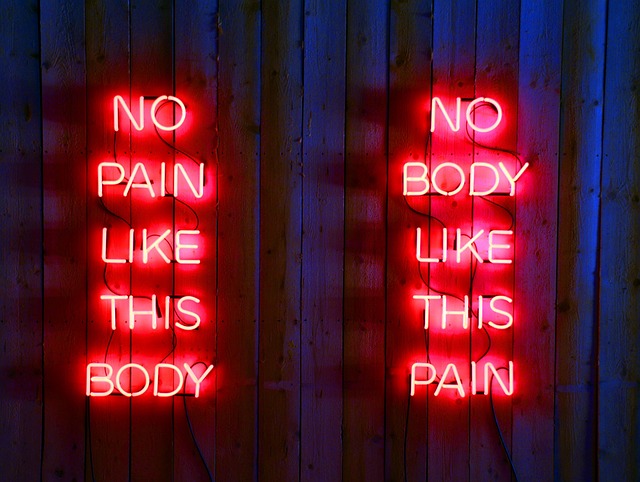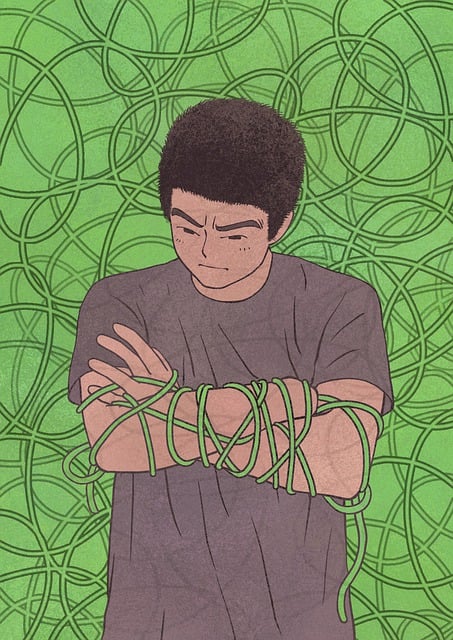Integrative pain management combines conventional medicine with alternative therapies like acupuncture, chiropractic care, and mindfulness to address chronic pain holistically. This approach focuses on tissue regeneration, reducing inflammation, and improving function through complementary modalities. Emerging techniques such as stem cell therapy and digital health technologies further enhance holistic solutions for effective chronic pain management and improved quality of life.
Integrative pain management offers a holistic approach to alleviating discomfort, combining conventional medicine with complementary therapies. This article explores a multifaceted strategy to tackle pain, focusing on understanding the body’s natural healing processes. We delve into how tissue regeneration, as a key component, can significantly reduce chronic pain.
Through a blend of scientific knowledge and alternative practices, including lifestyle modifications, readers will discover a comprehensive guide to optimal pain care. Additionally, we preview emerging techniques shaping the future of integrative pain management, emphasizing the potential of tissue regeneration.
- Understanding Integrative Pain Management: A Holistic Approach
- The Role of Tissue Regeneration in Alleviating Chronic Pain
- Complementary Therapies: Unlocking the Potential for Pain Relief
- Lifestyle Modifications for Optimal Healing and Comfort
- Future Prospects: Emerging Techniques in Integrative Pain Care
Understanding Integrative Pain Management: A Holistic Approach

Integrative pain management is a multifaceted approach that combines conventional medical treatments with alternative and complementary therapies to address pain holistically. It recognizes that pain is not just a physical sensation but is deeply connected to one’s emotional, mental, and spiritual well-being. This holistic perspective understands that chronic pain often stems from complex interactions within the body, mind, and spirit, rather than simply a localized issue.
By integrating various modalities such as acupuncture, chiropractic care, massage therapy, mindfulness practices, and natural healing techniques, this approach aims to promote tissue regeneration, reduce inflammation, and enhance overall function. These complementary therapies work in synergy with conventional treatments, providing a more personalized and comprehensive strategy for managing pain effectively while improving the quality of life.
The Role of Tissue Regeneration in Alleviating Chronic Pain

Chronic pain, often persistent and debilitating, is a complex condition that requires multifaceted treatment approaches. Integrative medicine offers a promising avenue by focusing on both the root causes and overall well-being of individuals suffering from this condition. One such innovative concept gaining traction in pain management is tissue regeneration.
Tissue regeneration involves stimulating the body’s natural healing processes to repair or replace damaged or diseased tissues, potentially alleviating chronic pain sources. By promoting the growth and restoration of healthy tissues, this approach aims to reduce inflammation, restore function, and provide long-lasting relief from pain. This method leverages the body’s inherent ability to heal itself, offering a more holistic and sustainable solution for managing chronic pain conditions effectively.
Complementary Therapies: Unlocking the Potential for Pain Relief

Complementary therapies offer a promising avenue for pain management by focusing on holistic healing and natural processes. These therapies go beyond traditional medication and surgical interventions, targeting not just symptoms but also the underlying causes of pain. Techniques such as acupuncture, chiropractic care, and massage therapy have gained recognition for their effectiveness in reducing pain and promoting tissue regeneration.
Acupuncture, for instance, involves inserting thin needles at specific points to stimulate natural healing responses in the body. This ancient practice has been shown to release endorphins, the body’s natural painkillers, and encourage blood flow, aiding in tissue repair and reduction of inflammation. Similarly, chiropractic adjustments can improve nerve function and reduce pressure on affected areas, providing relief for chronic pain conditions. Massage therapy is another powerful tool that relaxes muscles, improves circulation, and facilitates the healing process by reducing stress hormones and promoting tissue regeneration.
Lifestyle Modifications for Optimal Healing and Comfort

Lifestyle modifications play a pivotal role in integrative pain management, fostering an environment conducive to optimal healing and sustained comfort. By adopting a holistic approach, individuals can accelerate tissue regeneration through diet, exercise, and stress management. Nutritious foods rich in antioxidants, vitamins, and minerals support cellular repair while promoting anti-inflammatory responses within the body. Regular physical activity, tailored to individual needs, stimulates blood flow, enhances flexibility, and strengthens muscles surrounding affected areas, all of which contribute to reduced pain and improved mobility.
Additionally, stress reduction techniques such as mindfulness meditation, yoga, or deep breathing exercises are instrumental in integrative pain management. Stress hormones can exacerbate inflammation and pain perception; thus, actively managing stress levels helps regulate these responses. Embracing lifestyle changes not only empowers individuals to take control of their well-being but also paves the way for more effective conventional treatments, ultimately enhancing overall quality of life.
Future Prospects: Emerging Techniques in Integrative Pain Care

The future of pain management looks bright with emerging techniques in integrative care that promise more holistic and effective solutions. One promising area is tissue regeneration, where advancements in stem cell therapy and biomaterials are being explored to repair and regenerate damaged tissues, offering long-lasting pain relief for chronic conditions. These innovative approaches could significantly reduce the reliance on pharmaceutical interventions, which often come with side effects.
Additionally, digital health technologies are playing a growing role, enabling remote monitoring, personalized treatment plans, and improved patient engagement. Telemedicine, wearable sensors, and artificial intelligence (AI) algorithms enhance accessibility to care, especially for underserved populations. Integrative pain care of the future may well involve a combination of these techniques tailored to individual needs, promoting not just symptom management but also overall tissue healing and enhanced quality of life.
Integrative pain management offers a holistic approach to alleviating suffering, combining cutting-edge science with ancient wisdom. By harnessing the potential of tissue regeneration, complementary therapies, and lifestyle modifications, individuals can achieve lasting pain relief and improved quality of life. As research continues to evolve, emerging techniques promise even greater advancements in integrative pain care, providing hope and healing for those navigating chronic pain.
